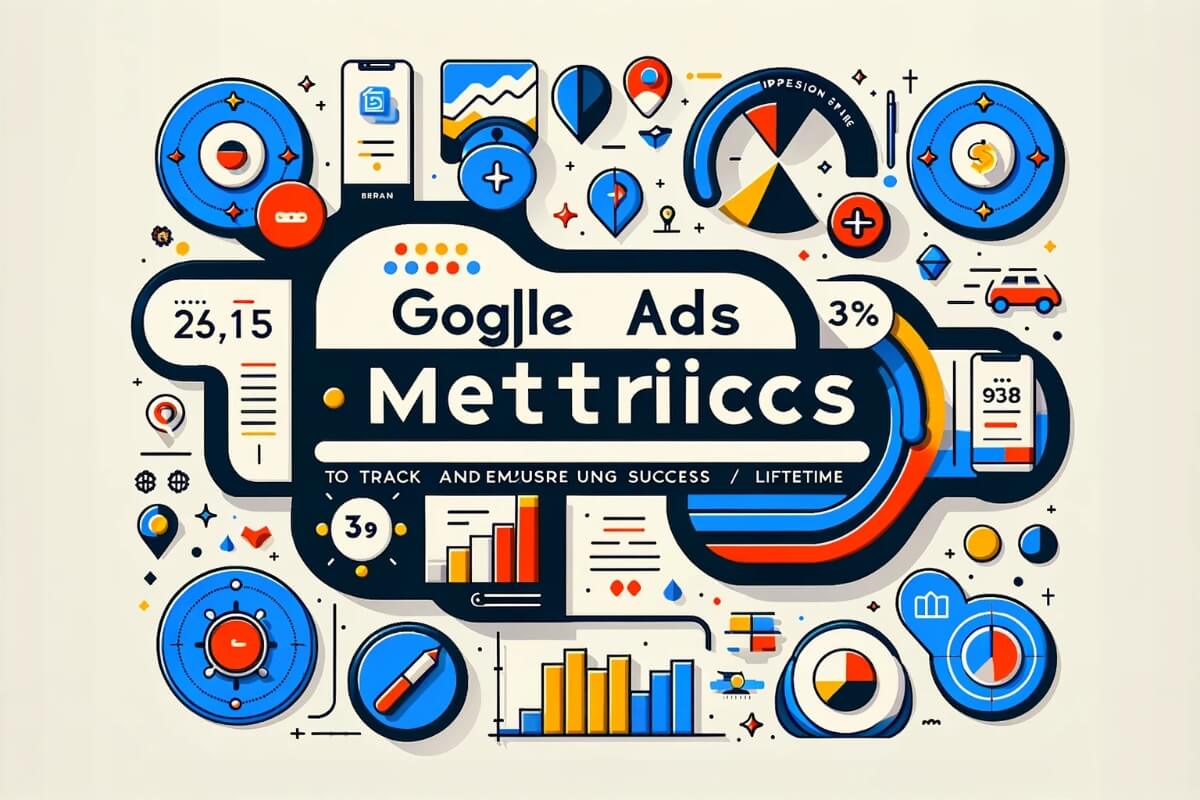Leverage Valuable Google Ads Metrics Like Conversion Rate, Impression Share, and Lifetime Value for Deeper PPC Insights and Opportunities
When running a Google Ads campaign, the sheer volume of data available can be overwhelming, especially for those new to paid search. While having extensive data at your disposal is beneficial for making informed decisions, knowing where to start can be challenging. Some metrics are undoubtedly more critical to success than others. This blog post will cover essential Google Ads metrics to track and measure success to help you make more informed decisions about your marketing strategy.
I will intentionally bypass some of the most popular metrics like clicks, costs, and conversions. While important, these metrics don’t tell the entire story of how your account performs and why. Instead, we’ll focus on a few key Google Ads metrics that provide a deeper understanding of your account’s performance and offer paths to improvement when used alongside your core KPIs. These metrics add significant value and insight but may not be as effective when considered in isolation.
1. Conversion Rate (CVR)
Conversion rate is one of the most straightforward Google Ads metrics to track and measure success. It represents the percentage of users who click on an ad and complete a desired action, such as making a purchase or filling out a form. Understanding this metric is crucial because it directly relates to the effectiveness of your ads in generating desired outcomes.
However, the true power of the conversion rate lies in its combination with click-through rate (CTR). While CVR tells you how many people take action after clicking on your ad, CTR indicates the quality of the traffic you’re generating. A high CTR suggests that your target audience resonates with your product and messaging, while a low CTR indicates potential issues with your targeting or ad copy.
For instance, suppose you have a PPC campaign with a lower conversion rate compared to the rest of your account. This discrepancy could stem from various factors, often falling into two categories: your Google Ads strategy or your landing page/website. Analyzing CVR alone makes it difficult to pinpoint the exact issue. But what happens if you also consider CTR?
If your conversion rate is low but your click-through rate is high, this suggests that your audience is engaged with your ad but encounters a disconnect upon reaching your landing page. In this scenario, improving the customer experience on your website should be your focus. Conversely, if both your CVR and CTR are low, the problem likely lies in your targeting, necessitating adjustments to your keywords and ad copy.
2. Impression Share
Once you’ve been running Google Ads campaigns for a while and things are going well, you might consider increasing your budget. But where do you start? Which campaigns have room for growth, and which ones are already maximized? This is where impression share becomes invaluable.
Impression share measures the percentage of impressions your ad receives compared to the total number of impressions it could receive. Two primary factors influence impression share: budget and ad rank. Understanding which of these factors limits your campaign is critical.
Fortunately, Google Ads provides metrics to determine what’s holding you back: Search IS Lost (Budget) and Search IS Lost (Rank). These metrics reveal how much impression share you’re missing and why.
- Impression share lost due to budget: This is straightforward to address by increasing your budget. You won’t need to adjust bids, meaning your cost per conversion remains stable.
- Impression share lost due to rank: To recover this impression share, you’ll need to either increase your bids or improve your quality score.
Returning to our initial scenario, using these impression share metrics can guide you on where to boost your budget without compromising performance. If your campaigns show a significant amount of impression share lost due to budget, there’s a clear opportunity to expand your budget and capture more impressions without affecting your cost per conversion. Conversely, if impression share is mostly lost due to rank, you need to decide whether it’s worth bidding more aggressively or if raising the budget is viable.
3. Lifetime Value (LTV)
Admittedly, lifetime value is not a metric directly available in Google Ads, but it’s a crucial one to determine, particularly if you run a business with repeat customers. Lifetime value represents the total value a customer brings over the course of their relationship with your business. This metric varies by industry.
- For a company selling socks, lifetime value includes repeat purchases.
- For a subscription service, it calculates the average duration a user stays subscribed before canceling.
- For higher-priced services (such as a marketing agency), it considers the average contract size and duration.
Calculating lifetime value for your brand is an invaluable exercise that can profoundly influence your PPC strategy. Let’s illustrate this with a sock-selling company example: Suppose this company sets up a Google Ads account and sells socks for $10 per pair, aiming for a 3:1 return on ad spend to be profitable. They optimize their account to achieve this return on every purchase.
Over time, they calculate the lifetime value of a customer and discover that the average customer purchases ten additional times. With this LTV insight, they can accept a lower initial return because each purchase leads to more down the line.
This additional metric can fundamentally change account strategies. Without LTV, the account manager couldn’t justify a lower initial return due to insufficient data. But with LTV, more aggressive strategies that might be less profitable initially can be backed up by data, leading to long-term growth.
Optimize Your Google Ads Campaigns by Tracking These Metrics
Every metric in Google Ads holds value, albeit to varying extents. While some metrics’ benefits are immediately apparent (e.g., more conversions = good!), others require more context to be fully appreciated. The more metrics you leverage to make informed decisions, the easier it becomes to identify issues and position yourself for success.
